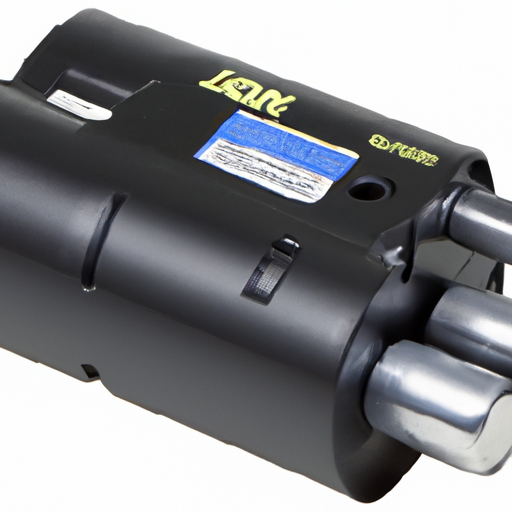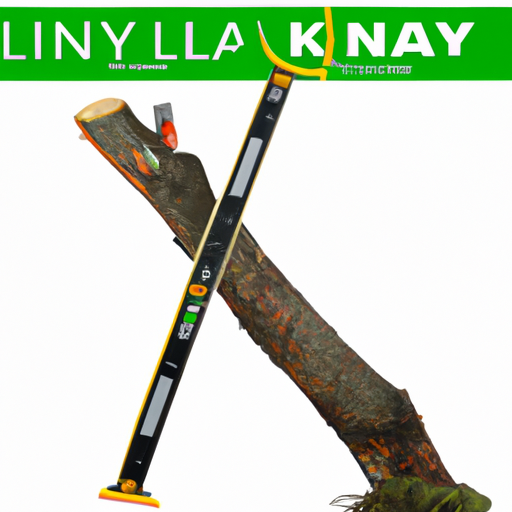In this article, we will explore the importance of safe work practices when using a chainsaw. Whether you are a seasoned chainsaw operator or a newcomer to the tool, understanding and implementing proper safety measures is crucial to prevent accidents and ensure a secure working environment. By following these guidelines, you can confidently and safely operate a chainsaw, protecting both yourself and those around you. So let’s uncover the key safe work practices for using a chainsaw!
Selecting the Right Chainsaw
When it comes to selecting the right chainsaw, there are a few factors to consider. The first is the size and type of chainsaw that best suits your needs. Chainsaws come in different sizes, ranging from small, lightweight ones for light tasks like pruning, to larger, more powerful ones for heavy-duty cutting and felling. Think about the type of work you will be doing and choose a chainsaw that is appropriate for that.
Another important consideration is choosing a reliable brand. There are many brands on the market, but not all of them offer the same level of quality and performance. It’s worth investing in a well-known and trusted brand that has a good reputation for producing high-quality chainsaws. This way, you can have confidence in the reliability and durability of your chainsaw.
Finally, ensure proper fit and comfort when selecting a chainsaw. Chainsaws come in different sizes and designs, and it’s essential to choose one that feels comfortable and fits well in your hands. You’ll be using your chainsaw for extended periods, so you want to make sure it is easy to handle and doesn’t cause unnecessary strain or discomfort.
Personal Protective Equipment (PPE)
Safety should always be a top priority when operating a chainsaw, and wearing the appropriate personal protective equipment (PPE) is crucial. Here are some essential items to consider:
Wear a Helmet with Face Shield or Safety Glasses
Protecting your head and face is of utmost importance. A helmet with a built-in face shield or safety glasses will shield your eyes from flying debris and protect your face from potential injuries. It’s an essential piece of PPE that should never be overlooked.
Use Hearing Protection
Chainsaws can be incredibly loud, and prolonged exposure to high noise levels can lead to permanent hearing damage. To protect your hearing, it’s important to wear hearing protection such as earplugs or earmuffs while operating a chainsaw.
Utilize Cut-Resistant Chainsaw Pants
Chainsaw pants are specially designed to protect your legs from cuts and injuries. These pants have multiple layers of cut-resistant fabric, which can significantly reduce the risk of chainsaw accidents. Investing in a pair of cut-resistant chainsaw pants is a wise decision for anyone operating a chainsaw.
Wear Cut-Resistant Gloves
Your hands are vulnerable to cuts and injuries while using a chainsaw, so it’s essential to wear cut-resistant gloves. These gloves provide an extra layer of protection against accidental contact with the chainsaw blade, giving you added peace of mind.
Put on Sturdy Boots with Non-Slip Soles
To protect your feet from falling debris and potential accidents, it is crucial to wear sturdy boots with non-slip soles. This will provide stability and prevent slips or falls, ensuring that you stay safe while operating the chainsaw.
Inspecting and Maintaining the Chainsaw
Before every use, it’s important to inspect your chainsaw to ensure that it is in good working condition. Here are some key steps to follow:
Inspect the Chainsaw Before Use
Check the chainsaw for any visible damage, such as cracks or loose parts. Make sure all the safety features are intact and functioning correctly. Inspect the chain for sharpness and proper tension, and ensure that the bar is clean and lubricated. Taking the time to thoroughly inspect your chainsaw before each use can help prevent potential accidents and ensure optimal performance.
Keep the Chainsaw Well-Maintained
Regular maintenance is essential to keep your chainsaw running smoothly and safely. This includes cleaning the chainsaw after each use to remove debris and sawdust, checking and topping up the fuel and oil levels, and inspecting the air filter for any dirt or damage. Following the manufacturer’s instructions for maintenance will help prolong the life of your chainsaw and keep it in good working order.
Regularly Sharpen and Replace Chainsaw Chains
A dull or worn-out chain can lead to inefficient cutting and increased risk of kickback. It’s important to regularly sharpen the chainsaw chain or replace it when necessary. A sharp chain will not only make your cutting tasks easier and more efficient, but it will also reduce the strain on your chainsaw motor and decrease the chances of accidents.
Preparing the Work Area
Setting up a safe work area is crucial for preventing accidents and ensuring a smooth operation. Here are some important steps to take:
Clear the Work Area of Debris
Before starting any cutting or felling tasks, it’s essential to clear the work area of any debris, such as rocks, branches, or other obstacles. This will help prevent tripping hazards and ensure a clear path for your chainsaw.
Ensure Proper Lighting
Having proper lighting is essential when operating a chainsaw. Make sure the work area is well-lit, especially if you’re working in dim or low-light conditions. Adequate lighting will help you maintain better visibility and reduce the risk of accidents.
Remove Tripping Hazards
Be mindful of any tripping hazards in the work area, such as cords, hoses, or uneven surfaces. Take the time to remove or secure these hazards to prevent trips or falls while operating the chainsaw.
Stay Clear of Power Lines
If your work area is near power lines, it’s vital to maintain a safe distance. Electricity and chainsaws don’t mix, so be cautious and aware of power lines to avoid any potential electrical hazards.
Safe Start and Handling
Properly starting and handling a chainsaw can significantly reduce the risk of accidents. Follow these guidelines for a safe start and handling:
Start the Chainsaw Properly
Always follow the manufacturer’s instructions for starting your chainsaw. Make sure you have a secure grip on the chainsaw, and place it on a stable surface before starting. Use the choke and primer bulb if necessary, and never start the chainsaw with the blade close to your body.
Hold the Chainsaw Firmly and with Both Hands
When operating a chainsaw, it’s important to have a firm grip on the handlebars with both hands. One hand should be on the rear handle and the other on the front handle, ensuring a strong and balanced grip. This will provide better control and stability while cutting.
Maintain a Secure Stance and Posture
Maintaining a secure stance and good posture while operating the chainsaw is crucial for stability and control. Stand with your feet shoulder-width apart, keeping a solid and balanced stance. Maintain a straight back and avoid leaning or overreaching while cutting. This will help reduce the risk of accidents and fatigue.
Operating the Chainsaw
Proper operation of the chainsaw is essential for safety and efficiency. Here are some important tips to keep in mind:
Cut at Proper Angles
When making cuts with your chainsaw, it’s important to do so at the proper angles. Cutting straight across the grain can increase the chances of kickback, so it’s better to cut at a slight angle. Additionally, cutting from the bottom of a log upward will help prevent the chainsaw from being pinched.
Avoid Chainsaw Pinching
Chainsaw pinching occurs when the blade becomes stuck in the cut, causing the chainsaw to kick back. To avoid this, pay attention to the tension in the wood and make sure you’re using the appropriate cutting technique. If the blade becomes pinched, never try to force it free by pulling backward. Instead, carefully release the pressure and readjust before continuing.
Use the Chainsaw Blade Guard
When not actively cutting, always engage the chainsaw’s blade guard. This will help protect not only yourself but also others from accidental contact with the blade while the chainsaw is not in use.
Do Not Overreach or Cut Above Shoulder Height
It’s important to maintain a safe working zone while operating a chainsaw. Avoid overreaching or cutting above shoulder height, as this can cause loss of balance and reduced control over the chainsaw. Always keep the chainsaw within a comfortable range of motion and adjust your position as needed.
Bystander Safety
It’s not just the operator who needs to be cautious while using a chainsaw. Here are some important tips to ensure bystander safety:
Keep Bystanders at a Safe Distance
When operating a chainsaw, it’s crucial to keep bystanders at a safe distance. Chainsaws can throw debris and have the potential for kickback, which can cause injuries to anyone standing too close. Establish a clear boundary and ensure that bystanders are aware and stay outside of it.
Warn Others Before Starting the Chainsaw
Before starting the chainsaw, it’s important to verbally alert any nearby individuals. This will give them a chance to move away from the area and avoid any accidents or injuries. Communication is key to ensure everyone’s safety.
Emergency Preparedness
While it’s important to work safely, it’s also crucial to be prepared for emergencies. Here are some steps to take:
Know How to Stop the Chainsaw Quickly
In case of emergency, it’s essential to know how to stop the chainsaw quickly. Familiarize yourself with the chainsaw’s emergency stop feature and practice using it. This will help you react swiftly in unexpected situations and prevent further accidents.
Carry a First Aid Kit
Accidents can happen, even with the greatest precautions. It’s wise to carry a well-stocked first aid kit with you whenever you’re using a chainsaw. This will enable you to promptly treat any minor injuries and provide immediate assistance if a more serious incident occurs.
Be Aware of Emergency Exits and Escape Routes
When working with a chainsaw, it’s important to be aware of your surroundings and identify nearby emergency exits and escape routes. In the event of a sudden hazard or emergency, knowing the quickest and safest way to exit the area can be crucial in ensuring your safety.
Avoiding Fatigue and Overexertion
Operating a chainsaw for extended periods can be physically demanding. Here are some tips to help you avoid fatigue and overexertion:
Take Regular Breaks
Chainsaw work can be tiring, both physically and mentally. Take regular breaks to rest and recharge. This will help prevent fatigue and maintain your focus, reducing the risk of accidents.
Stay Hydrated and Fuel Up
Staying hydrated and well-fed is crucial for maintaining energy and focus while operating a chainsaw. Always have water and snacks nearby to keep yourself properly fueled throughout the workday.
Use Proper Lifting Techniques for Heavy Objects
In addition to operating the chainsaw, there may be instances where you need to lift heavy objects, such as logs or branches. It’s important to use proper lifting techniques to avoid strain or injury. Bend your knees, keep your back straight, and lift with your legs rather than your back. This will help minimize the risk of back or muscle injuries.
Training and Education
Lastly, receiving proper training and staying up-to-date with safety guidelines and practices is essential for anyone operating a chainsaw. Here are some important considerations:
Receive Appropriate Chainsaw Training
Before operating a chainsaw, it’s crucial to receive proper training from a qualified instructor. Chainsaws can be dangerous tools, and knowing how to handle them safely is essential. Training courses will teach you the necessary skills, safety techniques, and best practices for operating a chainsaw.
Stay Up-to-Date with Safety Guidelines and Practices
Chainsaw safety guidelines and practices may evolve over time, so it’s important to stay informed and up-to-date. Regularly review safety materials provided by manufacturers, industry associations, and governmental organizations to ensure that you are aware of the latest safety recommendations and best practices.
By following these safe work practices for chainsaw operation, you can greatly reduce the risk of accidents and injuries. Remember, safety should be your top priority, and taking the necessary precautions will ensure a safer and more efficient work environment.


